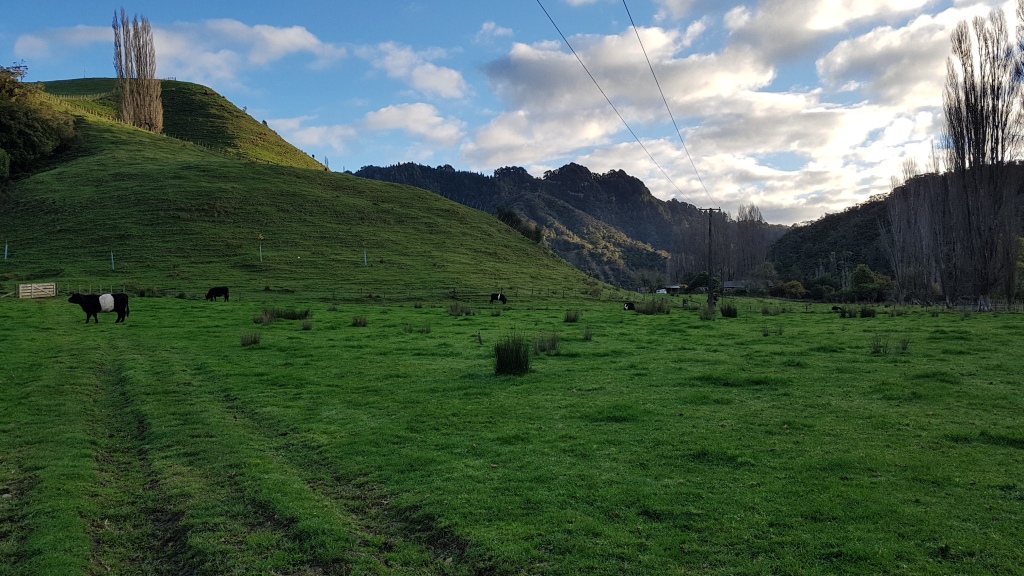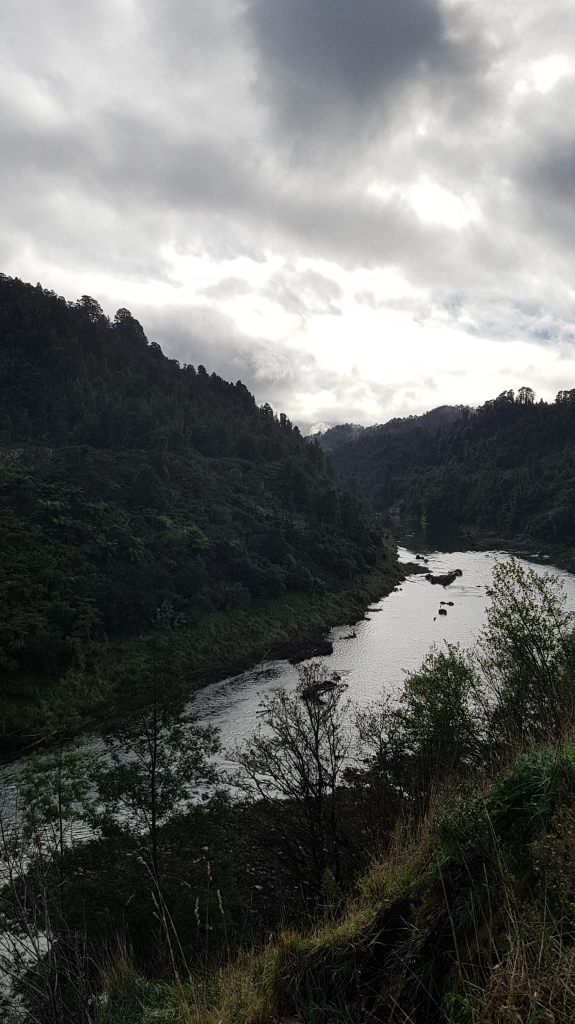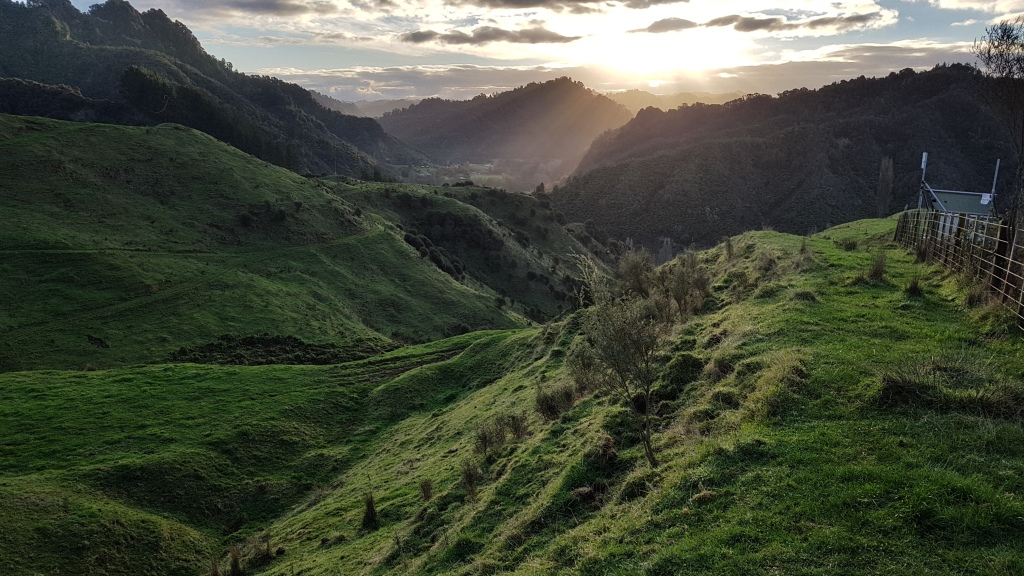After a quick detour via Taupo we made our way to Blue Duck Station. Whaea gave us a tick list to see who was up for getting their dinner cooked for them that night and at 3 courses for $20 (~£10) I think pretty much everyone on our bus signed up, because at that price, why wouldn’t you? Personally, I didn’t fancy pasta again. As we approached something of a cut-off zone by a railway line we were told to let someone from home know that we would be uncontactable for the next few days once we crossed the tracks and into the wilderness. Whaea wasn’t lying. The moment we crossed the railway track, phone signal was immediately non existent.
45 minutes down some horrendous back country roads and the views of some horrific vertical drops later (a few squeals were let out on some of the 180 degree bends) and we finally made it to Blue Duck. I had heard a lot about this place from my old roommate Kyle back at Attic Backpackers. This place was incredbly vast. Not only is the sight a 7000 acre working sheep and cattle farm (7000 sheep and 700 cows, 13000 sheep during lambing season), they are also a huge conservation site who do a lot of work with DOC and help protect the native brown kiwis and blue ducks which the site is named after. The famous Whanganui river passes through the middle of the farm, which is known as one of New Zealand’s ‘great walks’. I have put that in quotation marks because you can’t actually walk down this river(side), you have to kayak down it, all 145km which sounds phenomenal.
There is an enormous issue on the lands here regarding pests that include stoats, goats, deer and wild boar, all introduced by the original European settlers. It was explained to us that the guided hunts they offer help control and reduce the populations of many of these pests and what does get killed is butchered and cooked on site. We were shown the damage caused by some of the wild boar during lambing season and I am not surprised that they want to keep their population growth under control. The remains of any meat are given to the working dogs with the carcus given to the pigs on site. Full circle, no waste and some bloody good food. The highlight of which for me was the venison stroganoff. It was some seriously good food that I would have been happy to pay $20 for on its own. We stuffed our faces and went out to sit by a raging fire with some beers. We shared some stories about our lives and loves back home and it was nice to just say ‘Physicist’. I came to New Zealand to have a break from work, so when I am unable to go on, I like it, however; it was interesting to hear about what everybody else does in this instance. We ploughed through plenty of beer and we found out one of the biggest lies of the trip to date… Whaea actually isn’t really called Whaea. Her name is Nicole. We were all a bit dumbfounded and couldn’t believe it. We thought that Whaea was her indigenous name, but it turns out it is just her nickname. We were heartbroken, but only briefly as we teased Whaea about lying to us for the rest of our time together.
After a decent nights sleep and some great breakfast, a few of the group headed off to a guided hunt (returning later that evening with enough goat to feed an army), whilst others went for a horse ride and trek throughout the vast farm. As part of the ‘Journey’ package I had booked, I had a 4WD-Eco drive around the farm with a few others and it did not disappoint. With Mel our guide and one of the amazing farm dogs, Frank, we head out around the farm for a good few hours. Frank was really friendly, constantly saying hello by licking our ears, whilst simultaneously keeping watch of any moving animals across the farm. With Mel driving us around, it was really cool to see for real the sheer size of Blue Duck Station. We spent some time at their Manuka honey hives, kayaked around part of the river and to the local waterfalls and drove past some bulls on the road that were bloody massive and frightening all in one. Unfortunately we weren’t graced with luck and failed in our search for kiwis and blue ducks. We finished the drive through ‘Oreo’s’ field (home to a breed of cows who are nicknamed ‘oreo cows’, where the cows from a distance actually look like oreos, but I digress) and onto the famous summit.


The views from the summit were something incredibly special and we made it to the top as the sun was starting to go down. We took so many photos up there, and as I write this the background on my phone is still a shot I took up at the summit (the larger image above) and it is a really great reminder of what is such a wonderful place. We could have spent much longer up the top of the hill with the amazing views but we had to head back to the lodges for dinner and an early night. This was nothing to do with the late night and hangovers of the day before, but more to do with the fact that we were all had to be up at 5am the next day to leave this beautiful place and head onto our next adventure. Hiking the Tongariro Alpine Crossing which is something I had been looking forward to well before I left the UK for New Zealand.
Up Next: Hiking the Tongariro Alpine Crossing at National Park












